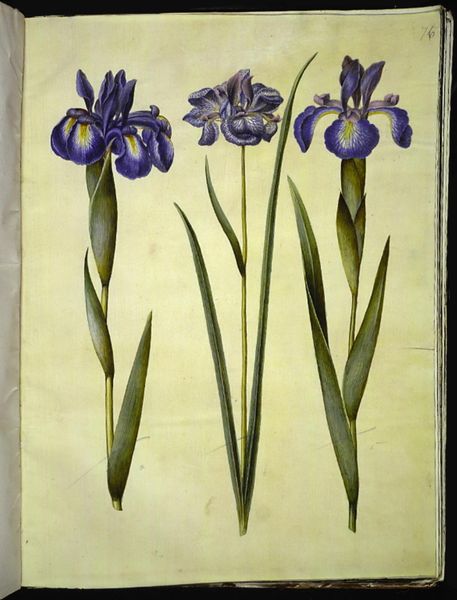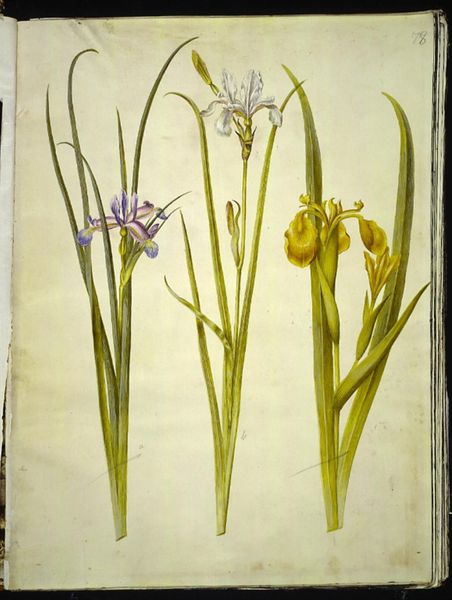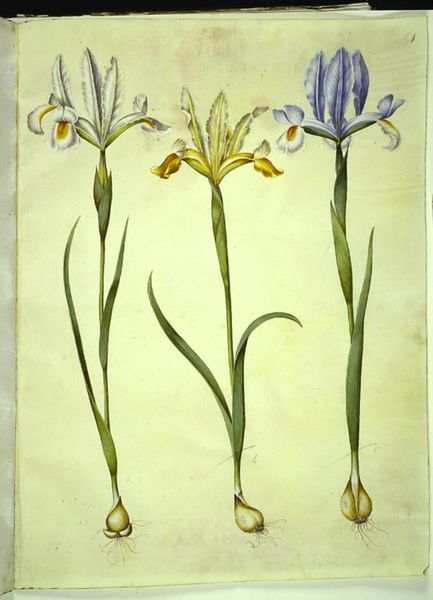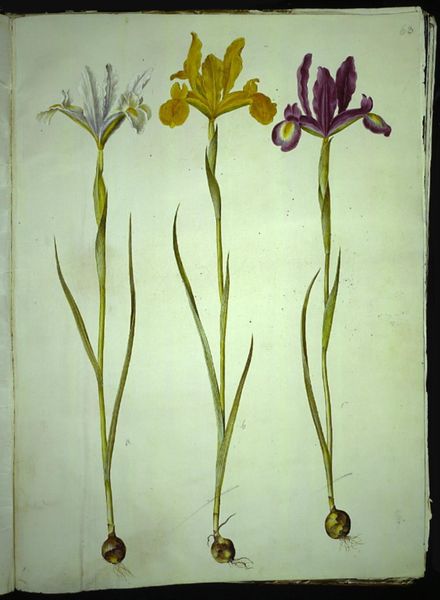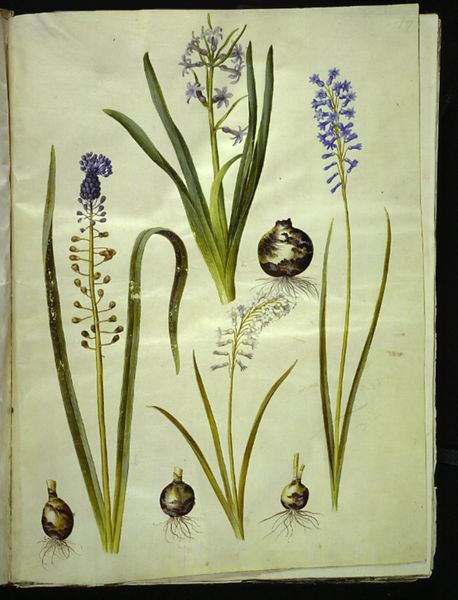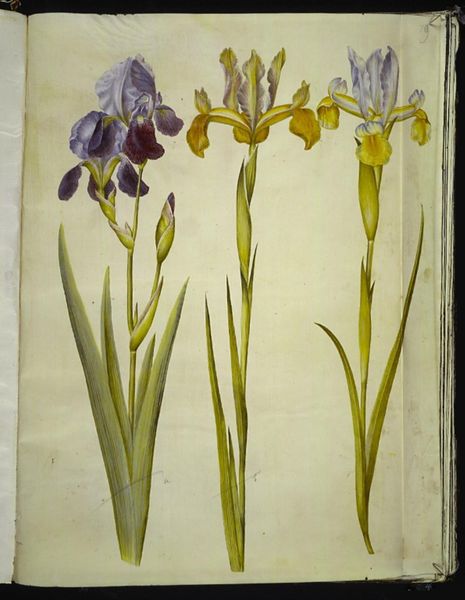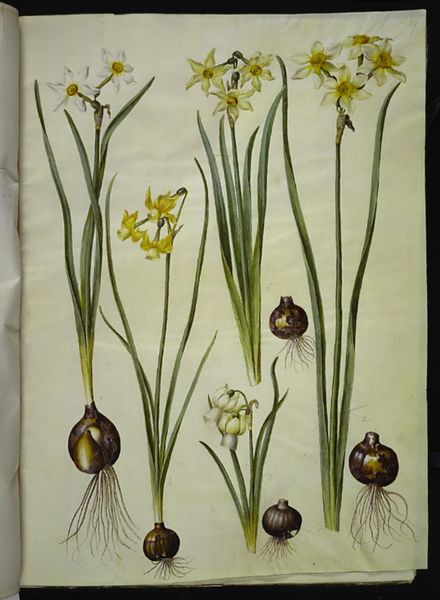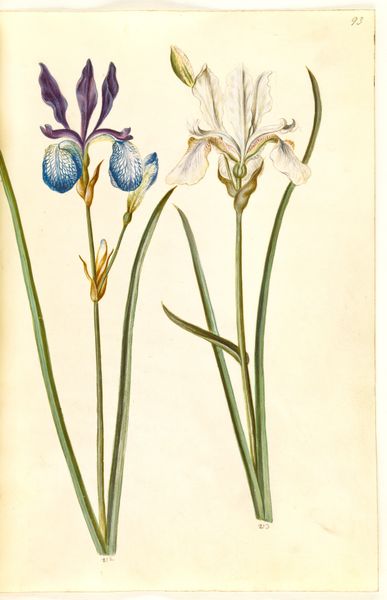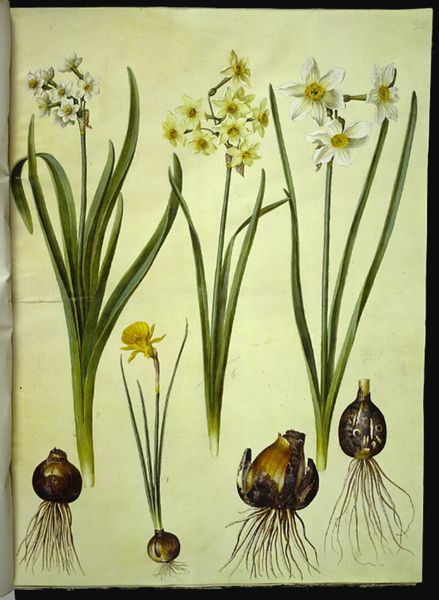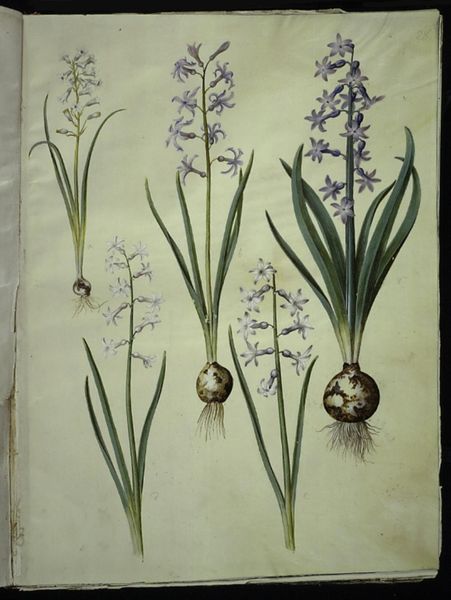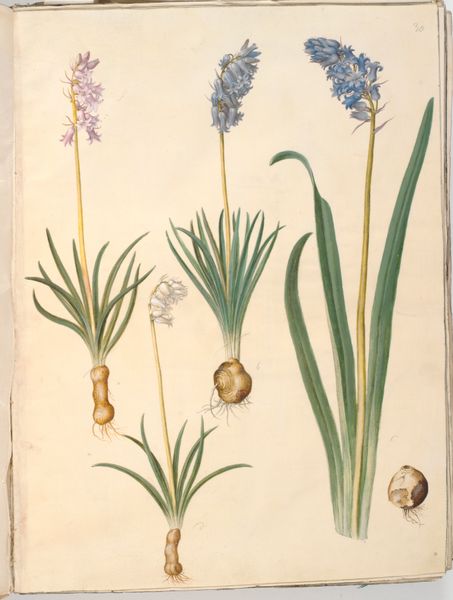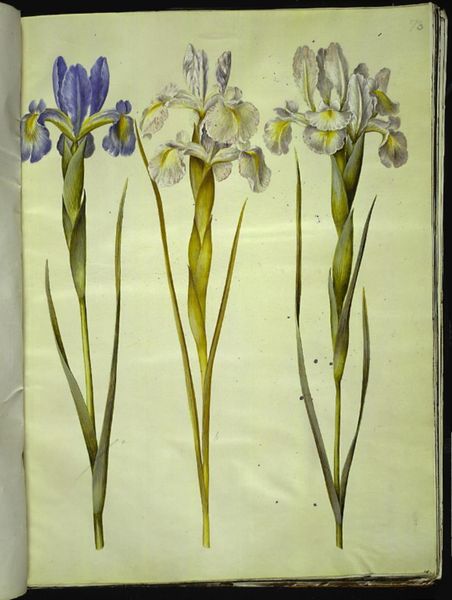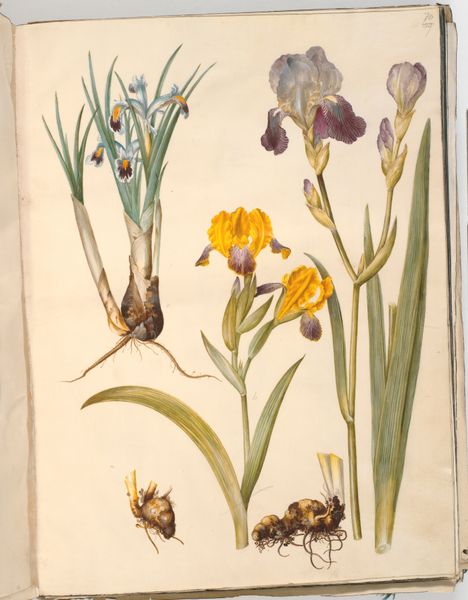
Iris pallida (bleg iris); Iris variegata (broget iris); Iris sibirica (sibirisk iris) 1649 - 1659
0:00
0:00
drawing, gouache, watercolor
#
drawing
#
gouache
#
watercolor
#
watercolour illustration
#
botanical art
Dimensions: 505 mm (height) x 385 mm (width) (bladmaal)
Hans Simon Holtzbecker made this watercolor of three irises on vellum in the mid-17th century. The realism suggests that this was created as part of a botanical survey; an effort to record and classify plant life. Such classification projects, advanced through the institutional support of universities and royal gardens, became a vital part of the scientific revolution. The iris was a popular subject in such surveys, and it would have appealed to Holtzbecker as a test of his technical skill. Note the variations in color and form. These would have made the iris an ideal way for him to demonstrate his ability to record subtle differences in the natural world. As historians of science and art, we can look to these images for clues about the shifting relationship between art, science, and power in the early modern period. Who commissioned them, and for what purpose? The answers help us to understand the social and intellectual networks in which they were produced.
Comments
No comments
Be the first to comment and join the conversation on the ultimate creative platform.
